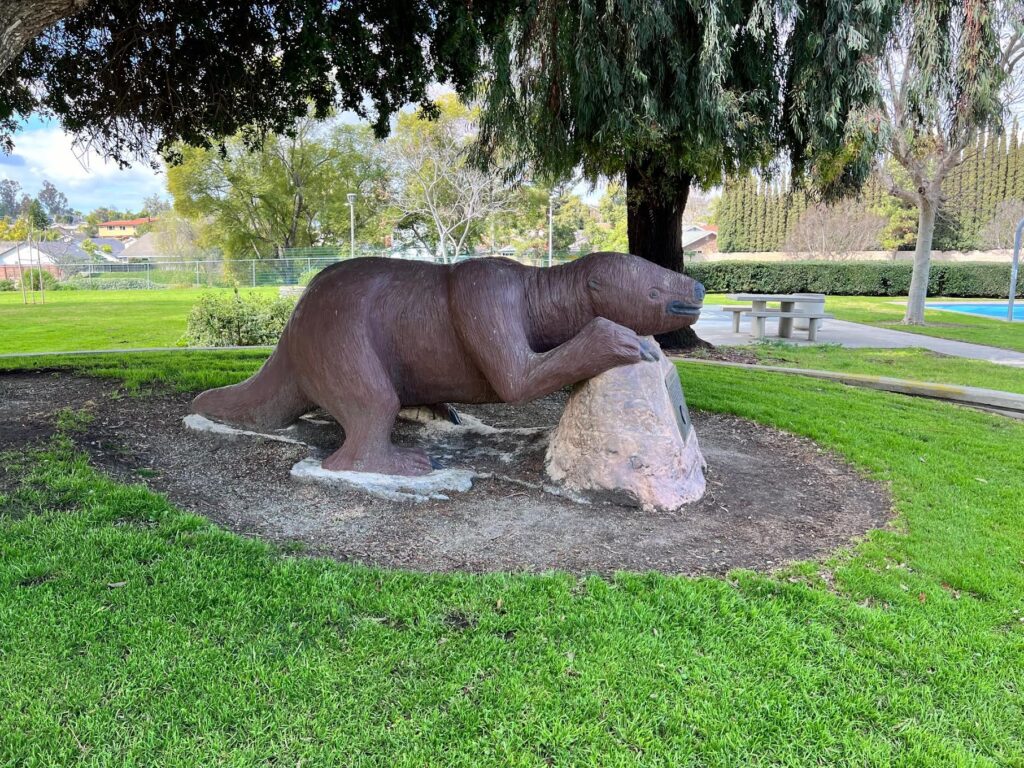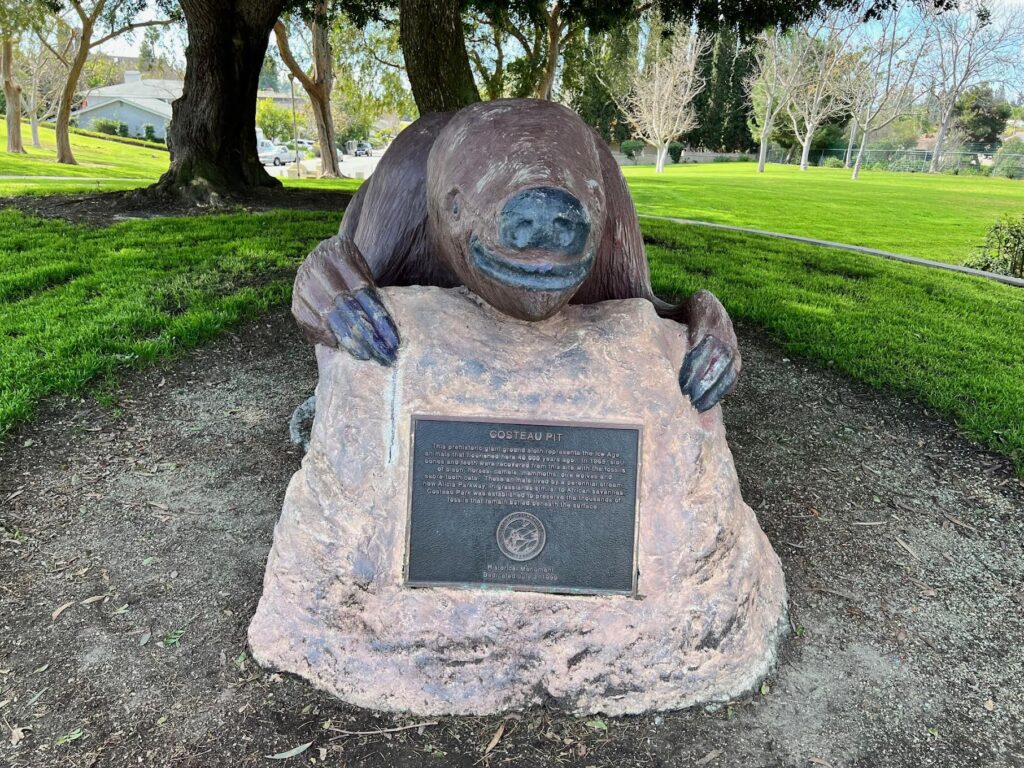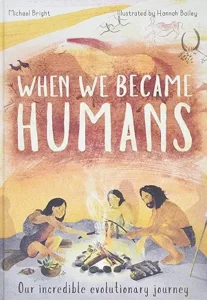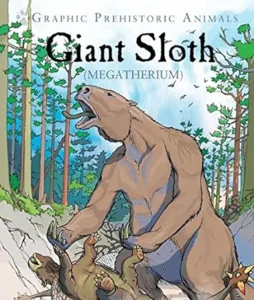The Stone Age was a broad prehistoric period during which stone was widely used to make stone tools with an edge, a point, or a percussion surface. The period lasted for roughly 3.4 million years and ended between 4,000 BC and 2,000 BC, with the advent of metalworking. Wikipedia
I recently went to Orange County to visit my in-laws with my husband. His mother lives in Laguna Hills. If you have ever been to Orange County, you might have noticed the vast newness of it all. The tract housing where the houses look identical. The wide multi-lane streets, and the bike lanes.
When I went on a walk with my mother-in-law, we stopped to rest at the park near her house. There was a curious statue towards the front and I went to check it out. This beast, a giant sloth called a megatherium, is from prehistoric times. It turns out that this park was once part of a vast savannah with Alicia Parkway then a natural stream that had water year round.
The bronze plate said that there were camels, bison, dire wolves, wooly mammoths, and saber tooth cats in addition to the giant sloth. My husband said that he could see why this area, thousands and thousands of years ago, would have been a dry grassy savannah. Southern California is, after all, a desert in many parts, so Savannah makes sense if all the tract houses were gone.
The sculpture of the giant sloth does make me laugh. The creature looks quite friendly, which is not necessarily how the books below depict it. So let’s get into it. I do have a list of 45 dinosaur books and a post about how T. Rex was not the fiercest but this book list is dedicated to Stone Age creatures, NOT including dinosaurs. Dinosaurs were extinct for more than 63.5 million years before the Stone Age.
15 Children’s Books About the Stone Age
Stone Age Beasts by Ben Lerwill, illustrated by Grahame Baker-Smith
Stone Age unicorns?! Yes, the Siberian Unicorn is included in this extensive resource on the Stone Age animals, including humans who have just discovered how to make tools out of stone, wood, and other natural materials. The animals covered include the Wooly Mammoth, Elephant Bird, Giant Short-Faced Bear, Wonambi, Gigantopithecus, Saber-Toothed Cat, Giant Short-Faced Kangaroo, European Hippo, Haast’s Eagle, Glyptodon, Giant Lemur, Steller’s Sea Cow, Giant Wombat, Giant Ground Sloth, Dire Wolf, Irish Elk, and Cave Lion. This is a fascinating look at creatures that might look familiar albeit in a much larger form! [nonfiction picture book, ages 6 and up]
Encyclopedia Prehistorica: Sharks and Other Sea Monsters by Robert Sabuda and Matthew Reinhart
No one does pop-up books better than Robert Sabuda! Filled with facts and pop-up surprises, Encyclopedia Prehistorica: Sharks and Other Sea Monsters explores the wonders of the ocean during prehistoric times! Learn about mega monsters like the megalodon (a relative of the shark), the giant squid, and the eight-ton sarcosuchus. [pop-up nonfiction book, ages 5 and up]
Encyclopedia Prehistorica: Mega-beasts by Matthew Reinhart and Robert Sabuda
The pop-ups make these prehistoric creatures come alive. Learn about prehistorical creatures including the Wooly Mammoth, Quetzalcoatl, Saber-Toothed Cats, and prehistoric bats and bears. This book has an elaborate pop-up in the center of each spread as well as smaller fold-outs with pop-ups embedded. These pop-ups are chock full of interesting information. Fans of Robert Sabuda’s pop-up books will not be disappointed! [pop-up nonfiction book, ages 5 and up]
When We Became Humans: Our Incredible Evolutionary Journey by Michael Bright, illustrated by Hannah Bailey
Some of the prehistoric apes in this book list are our ancient ancestors. Learn more about how humans transformed from apes to Neanderthals to modern humans. There is also information about what life was like in each period including the animals that lived at that time. [nonfiction picture book, ages 7 and up]
The First Drawing by Mordicai Gerstein
Imagine life more than 30 thousand years ago, before drawing was invented! Using a burnt stick (charcoal), imagine the first human to see shapes on a wall that resemble animals and draw them. It would feel like magic! This is one version speculating why early humans created cave paintings and this story is inspired by cave paintings in Chauvet-Pont-d’Arc cave in Southern France. [picture book, ages 4 and up]
The Secret Cave: Discovering Lascaux by Emily McCully Arnold
In the middle of WWII, the Lascaux cave containing prehistorical cave art was discovered by boys. Sealed for about 17,000 years, it was the only cave painting where the colors had not faded. The animal shapes often followed the contours of the walls and the paintings are believed to have been used as part of trance rituals more than 35,000 years ago.
This picture book tells the story of the four young men from Montignac, France who discovered Lascaux in 1940. The cave is now closed to all but a few scholars. Lascaux II, a meticulous replica opened to the public in 1983. [picture book, ages 6 and up]
Images from Lascaux II
Here’s a video of ancient people in a different area:
Giant Sloth: Megatherium (Graphic Prehistoric Animals) by Gary Jeffrey, illustrated by Alessandro Poluzzi
The Giant Sloth has quite an adventure day and the graphic novel format heightens the drama! Learn about the other Stone Age animals that the Giant Sloth encounters and how fierce this plant-eating giant could be in defense of itself. The illustrations in this book do not depict the Giant Sloth as the happy creature in the sculpture in the park though! [nonfiction graphic novel, ages 8 and up]
Sabertooth Tiger: Smilodon (Graphic Prehistoric Animals) by Gary Jeffrey, illustrated by Alessandro Poluzzi
This graphic novel adventure is set at the La Brea Tar Pits in Southern California. The Sabertooth Tiger is a fan favorite and a graphic novel version of science is a winning combination! [nonfiction graphic novel, ages 8 and up]
Sabertooth Cats by Melissa Higgins
Photos that realistically portray the scenes make this series a standout. The simple text conveys factual information in a dramatic and engaging way. Interestingly, male and female sabertooth cats were the same size, and did not chase prey since they were slow, but rather waited for an opportunity to ambush it. They hunted bison, camels, horses, and young mammoths. [nonfiction picture book, ages 4 and up]
Woolly Mammoths by Melissa Higgins
Woolly mammoths roamed parts of Earth’s northern hemisphere for at least half a million years. They were still in their heyday 20,000 years ago but within 10,000 years they were reduced to isolated populations off the coasts of Siberia and Alaska. By 4,000 years ago they were gone. Natural History Museum
Similar to the modern-day elephant, Woolly Mammoths lived in herds led by a matriarch and ate grass. When the climate warmed 10,000 years ago, the Woolly Mammoths were not able to find enough food and disappeared. [nonfiction picture book, ages 4 and up]
Wild Age: Ice Age Giants by Steve Parker
Besides Robert Sabuda’s pop-up books, this is probably the best book to get kids interested in the Stone Age. With vibrant page spreads showcasing just the right amount of information, the realistic illustrations of the ice age animals are a sure-fire pageturner! This book is well-designed for browsing and for digging into more information when the reader chooses to. It is also a very comprehensive overview of the animals and people during that time. [nonfiction middle grade, ages 8 and up]

Baby Mammoth Mummy: Frozen in Time!: A Prehistoric Animal’s Journey Into the 21st Century by Christopher Sloan, photography by Francis Latrielle
The tar pits in Southern California provided a window into life during the Stone Age, but there are other ways that fossils survive intact. In this book, a baby mammoth was found in Siberia frozen in time! During the Stone Age, this was once a grassland called a steppe. Learn about how the Nenets in Siberia, a group of nomadic reindeer herders, made this amazing discovery in May of 2007. Mammoths are important in the Nenet’s mythology who believe they beasts tended by gods of the underworld. The baby mammoth is surprisingly caught in motion, as if on an enjoyable walk! Even the expression of the baby mammoth’s face is preserved! [nonfiction middle grade, ages 8 and up]
Death Trap: The Story of the La Brea Tar Pits by Sharon Elaine Thompson
One of my favorite museums as a child was the La Brea Tar Pits in Los Angeles which showcased life during the Stone Age preserved naturally from the tap pits that trapped the animals, sometimes even in mid-battle! The fossiled skeletons of saber-toothed tigers and Wooly Mammoths were my favorite! [nonfiction middle grade, ages 10 and up]
This particular book is rather dry, but I wasn’t able to get two other books through my library system. I’d recommend tracking them down:
Little Miss History Travels to the La Brea Tar Pits & Museum by Barbara Ann Mojica and Victor Ramon Mojica
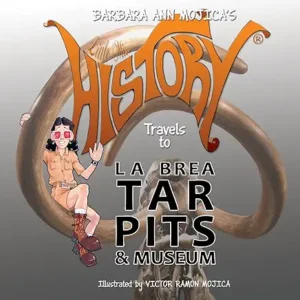
Stuck! The Story of the La Brea Tar Pits by Joyce Uglow and Valerya Milovanova
This one comes out on November 5, 2024!
If Extinct Animals Came to Life: Prehistoric Ancestors of Modern Animals by Matthew Rake, illustrated by Simon Mendez
What is fun about this book is how it shows the size of the Stone Age creatures if they lived in today’s world. While the photo illustrations sometimes look strange, that’s the entire point. Imagine a lizard the size of your house! The Lizard of Aus was one such creature! While the cover is visually confusing, once the reader turns the page, it will be hard to stop reading! [nonfiction middle grade, ages 8 and up]
Prehistoric Beasts: Dire Wolf by Marc Zabludoff
The Dire Wolf became extinct more than ten thousand years ago, but it was similar to today’s gray wolf. Both the gray wolf and coyotes existed alongside the dire wolf and it’s a mystery why the dire wolf did not survive. Perhaps their food source died out or the gray wolf was better at hunting their food source. Or, like the gray wolf that was nearly hunted to extinction by humans, perhaps it was human involvement. [nonfiction middle grade, ages 8 and up]
p.s. Related posts:
45+ Great Dinosaur Books for Kids (and videos)
10 Books on Helping Endangered Animals
20 Great STEM Picture Books paired with Fun Activities
18 Children’s Books Set in Museums
The Natural History Museum in London
To examine any book more closely at Indiebound or Amazon, please click on image of book.
As an Amazon and IndieBound Associate, I earn from qualifying purchases.
Follow PragmaticMom’s board Multicultural Books for Kids on Pinterest.
Follow PragmaticMom’s board Children’s Book Activities on Pinterest.
My books:
Food for the Future: Sustainable Farms Around the World
- Junior Library Guild Gold selection
- Selected as one of 100 Outstanding Picture Books of 2023 by dPICTUS and featured at the Bologna Children’s Book Fair
- Starred review from School Library Journal
- Chicago Library’s Best of the Best
- Imagination Soup’s 35 Best Nonfiction Books of 2023 for Kids
Amazon / Barefoot Books / Signed or Inscribed by Me


